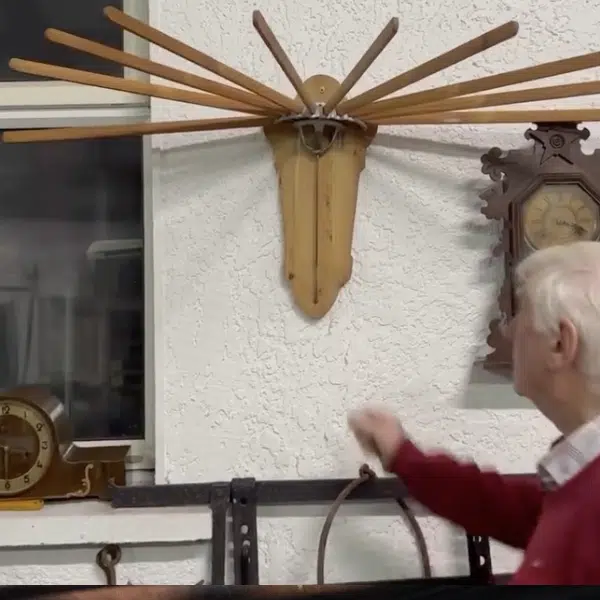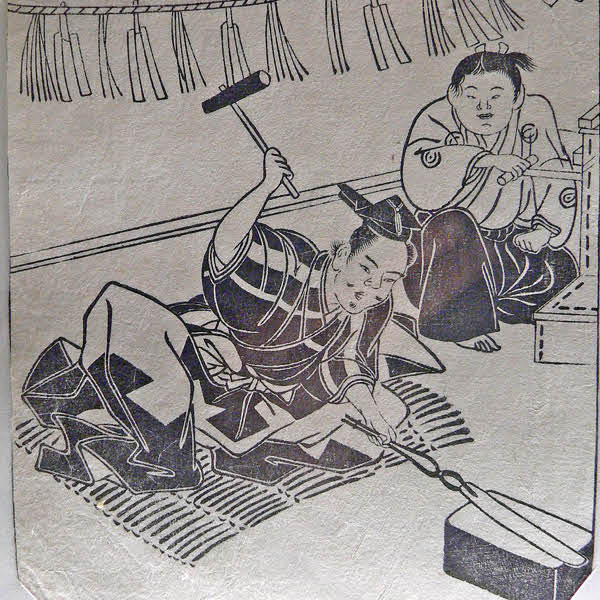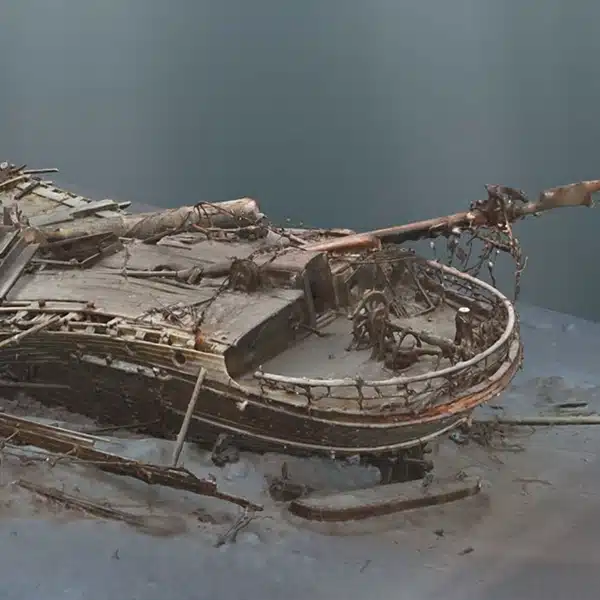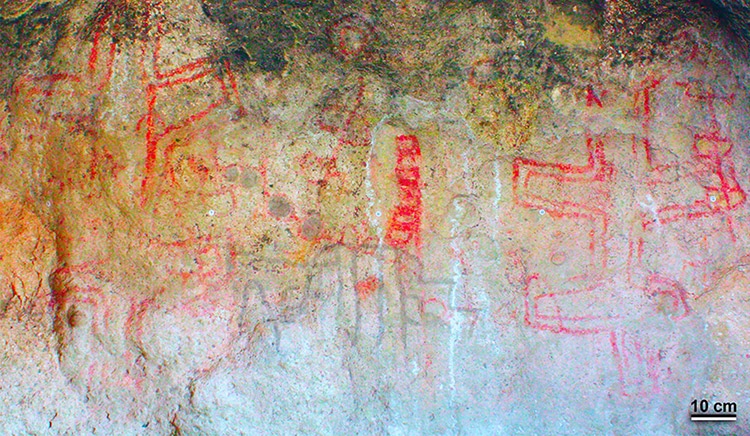
A digital enhancement to bring the rock art into sharper relief. (Photo:
G.R.V.)
Cave art left behind by ancient humans has created many scientific mysteries. Who drew what when—the answers can tell us a lot about the early movement and the lives of humans and our ancient relatives. Sometimes cave art records human-ness such as handprints, or activities such as hunting. Sometimes the designs discovered painted in caves or carved into rocks are geometric in nature. Among the most exciting cave art to be studied in the past decade is a cave covered in 895 paintings in Patagonia in South America. New carbon dating research, published in Science, suggests the drawings at Cueva Huenul 1 (CH1) in Argentina are 8,200 years old, making them the oldest known cave art in the region.
The drawings in CH1 have been an object of study for almost a decade. They present 446 distinct groupings of individual drawings. The cave also contained other kinds of ancient artwork beads crafted from shells, decorated animal bones, and gourds which were also engraved. All these works are evidence of the earliest human settlements down at the tip of South America, which humans reached around 12,000 years ago. Scientists wanted to know how old exactly the drawings were, so they tested charcoal found in some of the drawings, specifically “comb”-shaped black sketches that appear frequently.
Accelerator mass spectrometry revealed the remaining carbon in the organic material. Using radio-carbon dating, a practice based on radioactive decay's regular timeline, the charcoal could be dated. Multiple samples were used for accuracy. These yielded an impressive result: the charcoal was 8,171 years old. Not all drawings were created at the same time, however. Researchers believe 130 generations of ancient humans were responsible for the artwork—which includes abstract, human, and animal figures.
According to the paper, at the time of the oldest rock art, a “thinly distributed and highly mobile hunter-gatherer population” inhabited the area. The climate was very arid. “In our rock art case, the [evidence] from the drylands in South America shows that during the early part of the Mid-Holocene (approximately 10,000 to 7,000 years before the present) populations did not grow and may actually have decreased in size,” Ramiro Barberena, paper-co-author, remarked to Hyperallergic, likely with “periodic population crashes rather than long-term stability.” The scholar added, “Additionally, since the sites from the mid-Holocene do not show very intense occupations, we presume that these small human groups had to move in wider areas.” While they left much behind to study, there is still much to learn about Patagonia's earliest inhabitants.
These 8,200-year-old cave paintings date to the mid-Halocene, a period of receding shifting arid climates which affected the humans establishing a foothold in Patagonia.
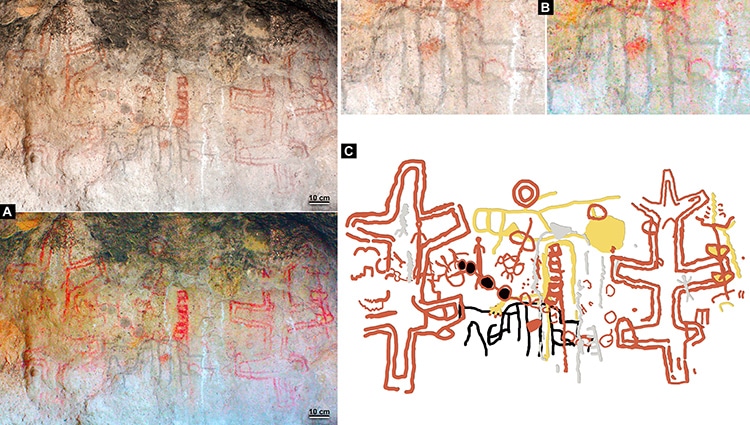
What do you see in this rock art? (Photo:
G.R.V.)
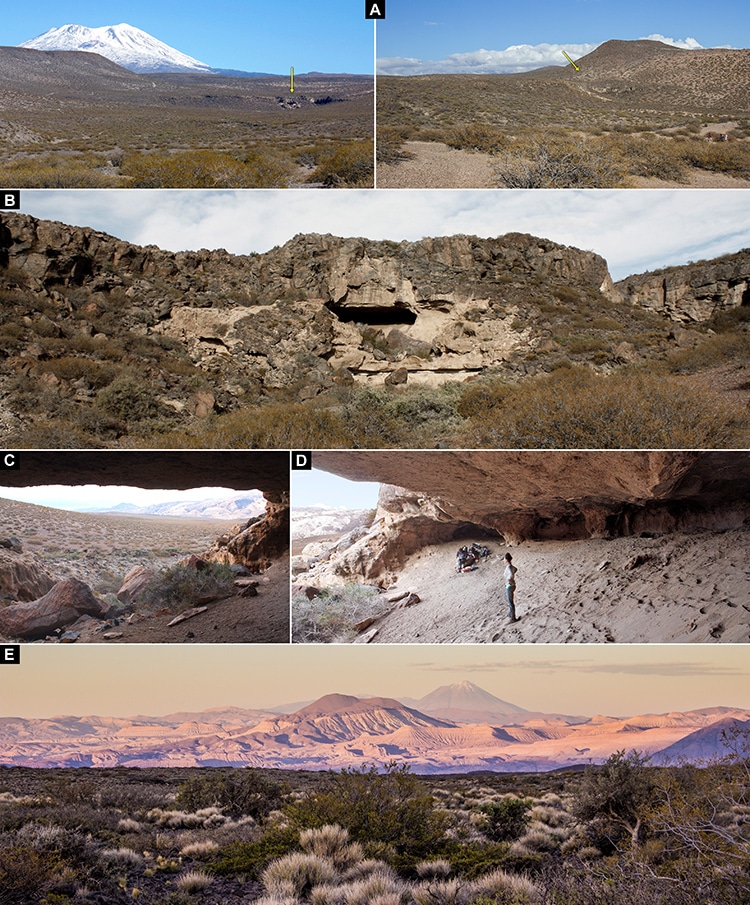
The volcanic landscape of the Monte Desert and the cave. (Photo: G.R.V.)
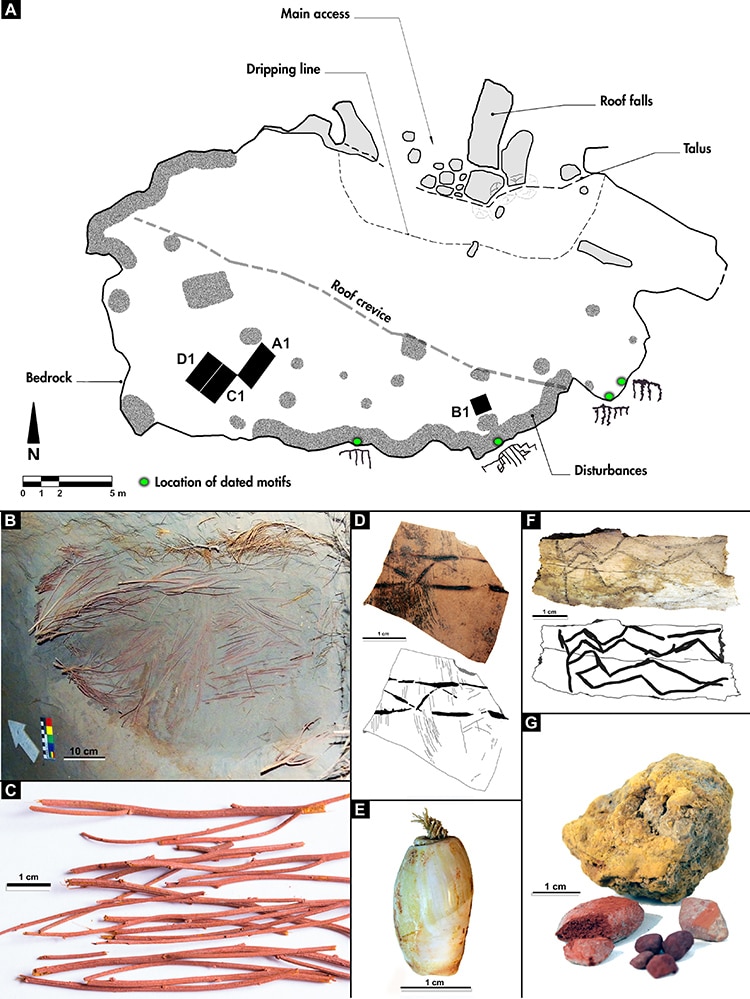
The pit structure, red ochre, and a shell bead. (Photo: G.R.V. and R.B>)
h/t: [Hyperallergic]
Related Articles:
You Can Now Take an Immersive Virtual Tour of the Lascaux Cave Paintings
14th Century Cave Art From Lost Civilization Discovered on Uninhabited Caribbean Island
You Can Now Take an Immersive Virtual Tour of the Lascaux Cave Paintings
World’s Oldest Piece of Fossilized Skin Is Discovered in Oklahoma Cave











































































